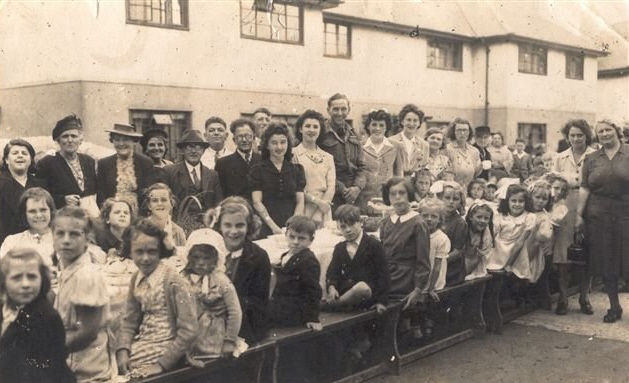December 2020
- Phil Hadley
- Nov 22, 2020
- 3 min read
Hello and welcome to our new website and welcome to the first of our monthly blogs. The idea is that each month I will share a little about the World War Two photographs and items in my collection or about the places that feature in my wartime novels and factual books.
December is the time that our thoughts turn towards Christmas and many of us this year are wondering just what Christmas will be like. That was certainly the feeling that pervaded many homes in December 1939 when faced with the first Christmas of the war.

This first image is from a Christmas postcard which were a popular and cheap way of sending Christmas greetings in 1939. Even the King & Queen sent a Christmas postcard to the armed forces with the picture showing the King in the uniform of the service in which the recipient was serving. This particular card was printed in Switzerland by the famous Gyger & Klopfelstein company in Adelboden and imported by the sole importer Post Card & Variety Stores Ltd of London N7. Gyger was a Swiss photographer and the company produced many cards during the 1920s and 1930s as the business flourished. As my family hail from the East End of London it was purchased by my aunt as a teenage girl somewhere in London. In Cornwall many were cheered by the service personnel who were given Christmas leave returning home. However Truro Post Office reported dealing with 20,000 more items of mail than in 1938.

This second Christmas postcard hails from Christmas 1943. It is a picture by the famous illustrator Margaret Tarrant and published by the Medici Society Ltd, London. From what I can gather it was one of a number of Christmas works the artist did in 1942 and turned into postcards which were then sold throughout the war and even afterwards. Animals in Biblical scenes were a popular theme for Tarrant and this nativity scene would have been popular in 1943. There was no wrapping paper for Christmas presents, the staples of Christmas food were scarce, though in Cornwall, as across the UK, the American troops threw a number of parties for the children where there seemed to be no shortage of anything!

The third card is printed on coarse paper and was produced by Savory Ltd of Bristol. Ernest Wyman Savory was a fine art publisher in Bristol from 1889 the business having grown out of a printing workshop in Cirencester. Savory also produced munitions during the First World War. It shows a quote from the Book of Ecclesiasticus, one of the wisdom writings in the Apocrypha, above a scene showing both the Wise Men and the Shepherds looking towards Bethlehem. One wonders if the emphasis of the phrase ‘They sleep not at their watches’ was a subtle reminder to those having to do duties through the long night hours. It was sent by my grandmother to her 19 year old daughter at Christmas 1945 and shows that although the war had finished rationing and shortages had not as the card is a far cry from the quality of the earlier two.
However, despite the hardships and uncertainties of war when families were separated and many knew much sorrow, there was still the desire to celebrate Christmas and give those you loved encouragement and comfort from the message of the Christ child as these cards show.
I trust whatever shape and form your Christmas may take this year you will discover anew the simplicity and wonder of Emmanuel – God with us – and draw encouragement and comfort from the message of the Babe of Bethlehem. Happy Christmas.




Comments